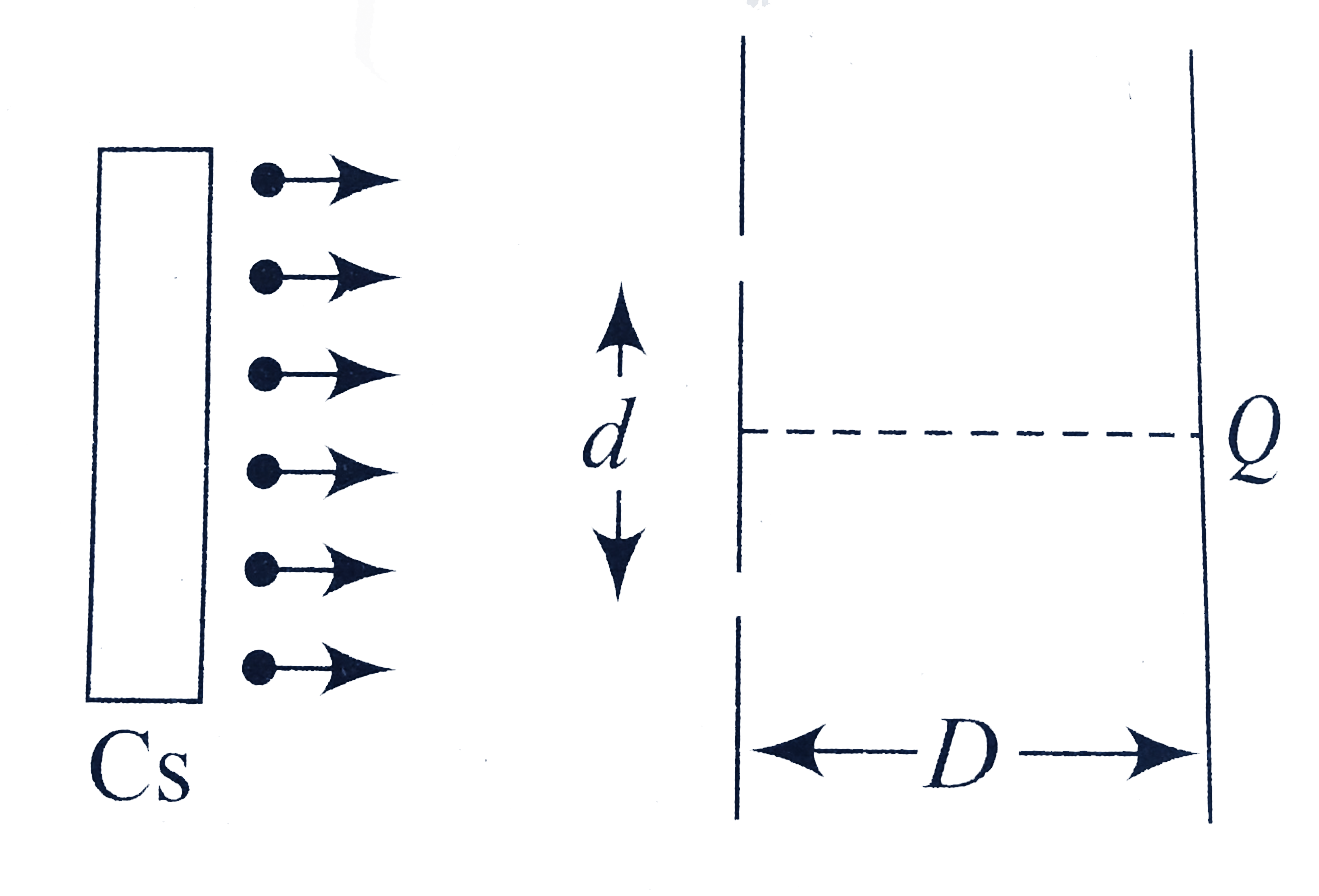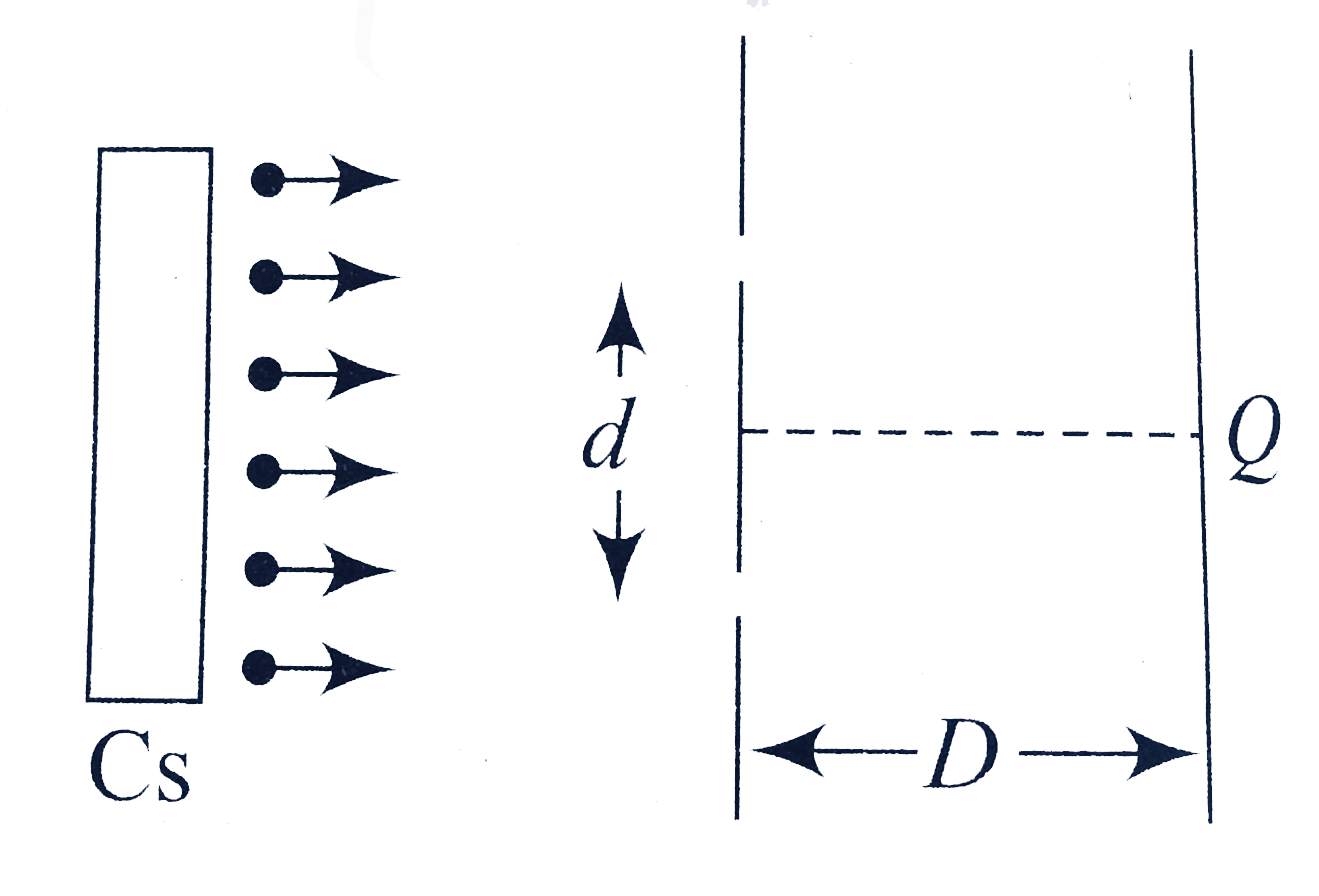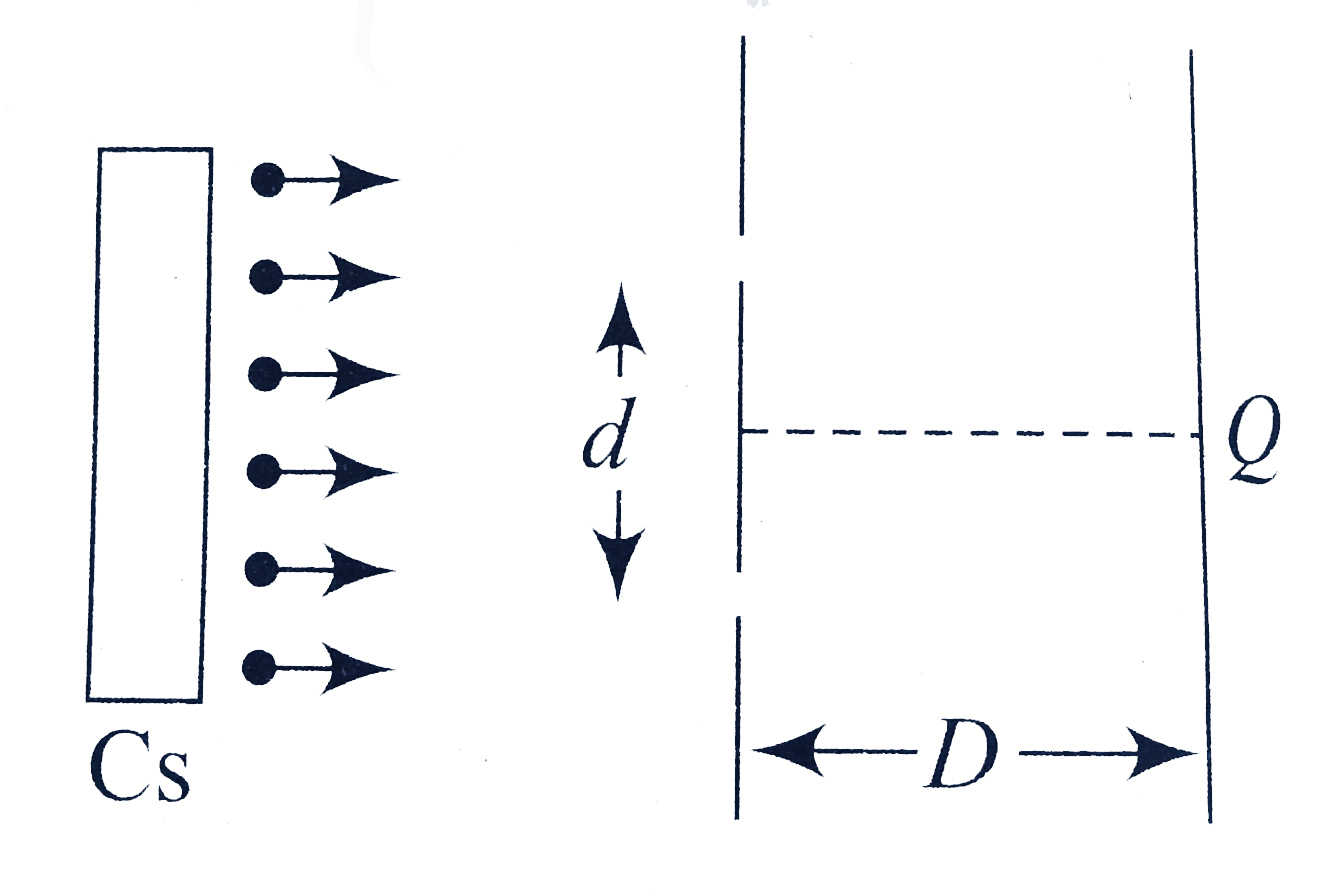
A Cs plate is irradiated with a light of wavelength λ=hcϕ,ϕ being the work function of the plate, h Plank's constant, and c the velocity of light in vacuum. Assume all the photoelectron are moving perpendicular to the plate toward a YDSE setup when accelerated through a potential difference V. Take charge on a proton =e and moss of an electron =m. Read the paragraph carefully and answer the following question:
Q. Instead of moving perpendicular to the plate, if the electrons were moving randomly, then the central maximum would shift
upward
downward
no shift
no fringes will be formed
The correct Answer is:C
Central maxima will remain at the same position.
Topper's Solved these Questions
- PHOTOELECTRIC EFFECTBOOK - CENGAGE PHYSICSCHAPTER - PHOTOELECTRIC EFFECTEXERCISE - Integer
9 Videos
- PHOTOELECTRIC EFFECTBOOK - CENGAGE PHYSICSCHAPTER - PHOTOELECTRIC EFFECTEXERCISE - Single Correct Answer Type
7 Videos
- PHOTOELECTRIC EFFECTBOOK - CENGAGE PHYSICSCHAPTER - PHOTOELECTRIC EFFECTEXERCISE - Multiple Correct
10 Videos
- NUCLEIBOOK - CENGAGE PHYSICSCHAPTER - NUCLEIEXERCISE - QUESTION BANK
59 Videos
- RAY OPTICSBOOK - CENGAGE PHYSICSCHAPTER - RAY OPTICSEXERCISE - DPP 1.6
12 Videos
Similar Questions

A Cs plate is irradiated with a light of wavelength λ=hcϕ,ϕ being the work function of the plate, h Plank's constant, and c the velocity of light in vacuum. Assume all the photoelectron are moving perpendicular to the plate toward a YDSE setup when accelerated through a potential difference V. Take charge on a proton =e and moss of an electron =m. Read the paragraph carefully and answer the following question:The fringe width due to the electron beam is
View Solution
A Cs plate is irradiated with a light of wavelength λ=hcϕ,ϕ being the work function of the plate, h Plank's constant, and c the velocity of light in vacuum. Assume all the photoelectron are moving perpendicular to the plate toward a YDSE setup when accelerated through a potential difference V. Take charge on a proton =e and moss of an electron =m. Read the paragraph carefully and answer the following question:
Q. If the wavelength of light used in photoemission is less that λ, then the fringe width will
View Solution
Knowledge Check

A Cs plate is irradiated with a light of wavelength λ=hcϕ,ϕ being the work function of the plate, h Plank's constant, and c the velocity of light in vacuum. Assume all the photoelectron are moving perpendicular to the plate toward a YDSE setup when accelerated through a potential difference V. Take charge on a proton =e and moss of an electron =m. Read the paragraph carefully and answer the following question:The fringe width due to the electron beam isAλDdBλD2dChD(d√2emV)Dnone of these
A Cs plate is irradiated with a light of wavelength λ=hcϕ,ϕ being the work function of the plate, h Plank's constant, and c the velocity of light in vacuum. Assume all the photoelectron are moving perpendicular to the plate toward a YDSE setup when accelerated through a potential difference V. Take charge on a proton =e and moss of an electron =m. Read the paragraph carefully and answer the following question:
Q. If the wavelength of light used in photoemission is less that λ, then the fringe width willAincreaseBdecreaseCremain sameDcannot be dicidedAn electron of mass m and charge e is accelerated from rest through a potential difference V in vacuum. The final speed of the electron will be
AV√e/mB√eV/mC√2eV/mD2eV/m
An electron of mass m and charge e is accelerated from rest through a potential difference V in vacuum. The final speed of the electron will be
View SolutionAn electron of mass m and charge e is accelerated from rest through a potential difference V in vacuum. The final speed of the electron will be
View SolutionIf the work function of a metal is 'ϕ' and the frequency of the incident light is 'v', there is no emission of photoelectron if
View SolutionIf the work function of a metal is 'ϕ' and the frequency of the incident light is 'v', there is no emission of photoelectron if
View SolutionAn electron and proton are accelerated through same potential, then λe/λp will be
View Solution
